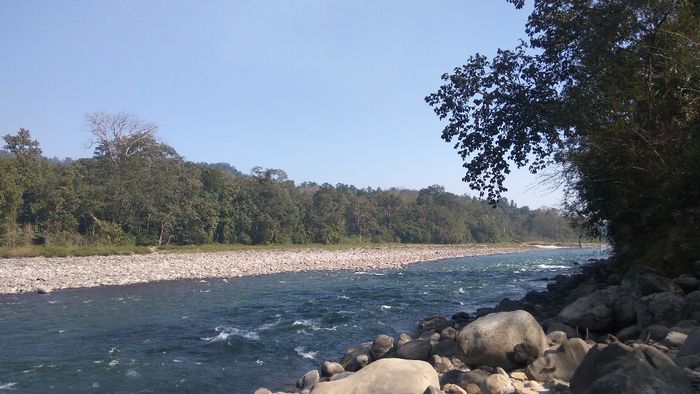Glancing Kameng by a quaint village: Why Tippi deserves a tourism upgrade
Tippi, a quaint village in Arunachal Pradesh, holds immense tourism potential with its scenic beauty and cultural attractions. Despite its charm, it remains underexplored, awaiting recognition from the tourism sector.

- Oct 16, 2024,
- Updated Oct 16, 2024, 11:10 AM IST
A towering Gompa welcomes you at a distance once you enter through the Bhalukpong gate. For me, the gate itself was fascinating when I first saw it – seemed evocative of a glorious past. The distant Gompa remains hidden under the fluttering religious flags. A short hike leads to the Gompa which offers a view of the convergence point of the Kameng River with the downstream delta. Beyond the Gompa, one enters the Tippi village, first village of Arunachal Pradesh en route this entry point.
My first visit to this quaint village in the West Kameng District of Arunachal Pradesh was owing to a curiosity to explore what is on the other side – of Bhalukpong, of Assam. With markets and shops on either side of the gate, Bhalukpong acts as a small hub for villagers near and far, including Tippi. Although the Gompa leads the way, the Kameng meanders along as one delves inward to the village.
A small chowk with a few shops makes the centre of Tippi. A bridge connects the villagers on each side and also offers a wide view of the Kameng – during its prime and off-season. Gompas and little churches dot the village from Bhalukpong side to the other end. Although it may seem like a one-off stop en route Bomdilla/Dirang/Tawang, Tippi has some solace to offer on its own.
I had multiple escapades to this tiny village and every time I felt it had quite some potential for local tourism. For starters, it boasts the Tippi Orchid Research Centre. Situated on the west bank of the Kameng River, this 10 hectares-spread Centre houses an orchidaria, a tissue culture lab., a museum, an herbarium, a garden, and the main attraction – an orchid glass house. Thousands of rare and exotic species make up for a day trip with family and friends. But did I get to have this experience on my first trip? No, thanks to Google Maps, which led us to a shop with some flower pots outside, situated at the Tippi chowk right before crossing the bridge. From there, it is almost two kilometres to the actual location. For some reason, no one could guide us on our first visit, we discovered it on our second visit by ourselves while trying to figure out what lay ahead.
On another visit, I chanced upon the Lumum Falls (also known as the generic Tippi Waterfall) that flows right by the highway. A beautiful waterfall that has a concrete base where visitors can take a dip. Mostly tourists from Tezpur and locals thronged the place. There was a construction going on to offer tourists a place to get changed and to offer some resting place. A few women had set up makeshift stalls of momos and other snacks and beverages. This was peak Summer 2019. It seemed a perfect getaway for nearby day travellers. There is a plaque at the front that talks about the rich history of the Lumum Falls.
“The waterfall has been named after Rani Lumum of Hrussos (Akas). Earlier it was known as ‘Mimjeow Kutsu’ by the Hrussos (Akas), indigenous people of the land. Lumum was married to Drulyu Dususow, the head of Gohaintain village. After the death of Drulyu Dususow, Lumum became the ‘Nugom’ of Gohaintain village, because of her wisdom and morality. The local term ‘Nugom’ is denotation of wealth position and economic stability. It also refers to the one who wields immense power and influence in village and also commends respect of the subject. Lumum was referred as ‘Aka Rani’ by research scholars and simultaneously Government of India recognised her and invited her to visit New Delhi, the capital of India. In November 1974, due to prolonged illness, she passed away for heavenly abode.” (Courtesy: Aka (Hrusso) Elite Society)
But cut to my subsequent visits after the pandemic, the Falls remained closed with the construction work halted and the entrance sealed. My last update is from May 2023. With such history and such charm for travellers, it shall be revived and upgraded for ease of access.
The village already has a few decades-old hotels that offer a stunning vista of the Kameng. Some eateries on the way provide scrumptious rice platters, thukpa, momo, and noodles. The view of Kameng during late Autumn and Winter is mesmerizing. The Tippi Forest Rest House has a viewpoint for travellers to stop by and glance at the Kameng. Yet, none of this is organized or has got the deserved attention from the tourism department. With Bhalukpong railway station at one end, and a good number of public transport plying to and fro Tezpur, it has good connectivity all-round. It is only a matter of time that with adequate boost from the authorities, it can very well turn into a thriving tourist getaway.